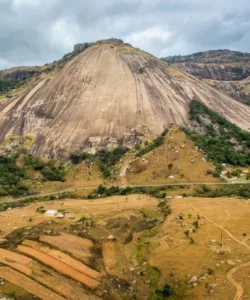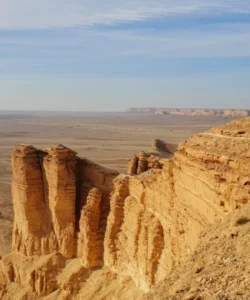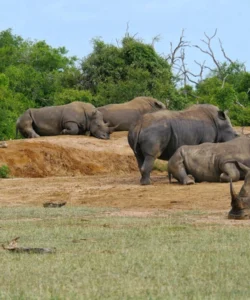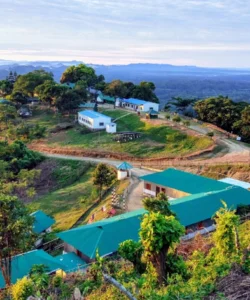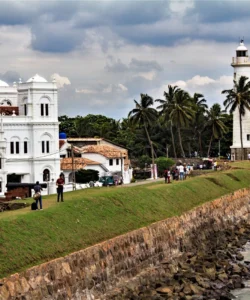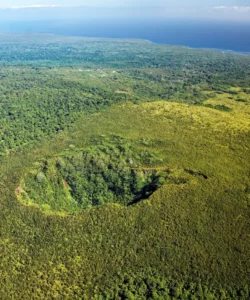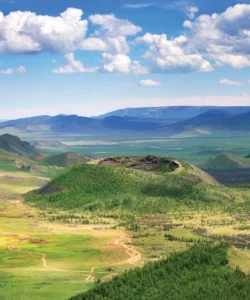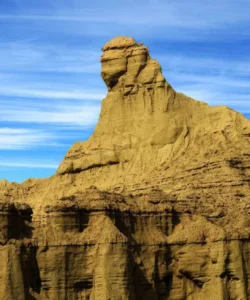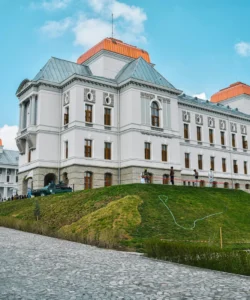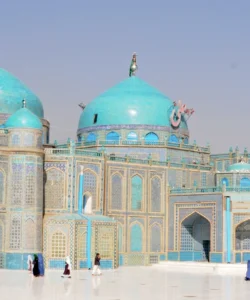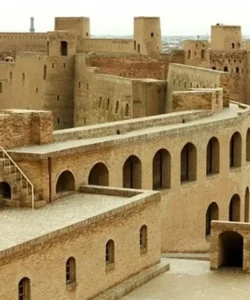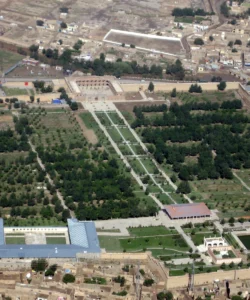Al Wahba Crater, also known as Maqla’ Tamiyyah, is a magnificent geological wonder located in the western region of Saudi Arabia. It is a massive volcanic maar crater, renowned for its colossal size, unique landscape, and a mesmerizing white salt crust at its base.
Name: Al Wahba Crater (Arabic: فَوْهَة ٱلْوَعْبَة, Fawhat al-Waʿbah)
Address: The crater is situated on the western edge of the Harrat Kishb basalt plateau in the Hejazi region of Saudi Arabia, approximately 250 kilometers (155 miles) away from the city of Taif.
How to Get There:
Accessing Al Wahba Crater is a journey into a remote part of Saudi Arabia, but the road is now largely paved and well-developed for tourists.
- By Air: The closest international airports are in Taif (TIF), Medina (MED), or Jeddah (JED). From any of these cities, you would travel by road. The crater is about a 3- to 4-hour drive from Medina or Jeddah, and a slightly shorter drive from Taif.
- By Road: A paved road leads directly to the crater’s rim, making it accessible even with a standard car, not necessarily a 4×4. The journey is scenic, passing through vast volcanic fields (the Harrat Kishb plateau). Many tour operators offer guided day trips or overnight camping trips from cities like Jeddah, Taif, or Medina.
- Within the Site: A modern visitor center with picnic shelters and a small mosque is located at the rim. For the adventurous, a prepared path with stairs and handholds on the northern side allows for a hike down to the crater floor.
- Hiking to the bottom: The trek down is steep and can take 45-60 minutes, while the climb back up is more strenuous and can take 60-90 minutes. It is best to hike during the cooler months and to bring plenty of water.
- Best Time to Visit: The cooler months from October to April are ideal for visiting. The crater is particularly stunning at sunrise and sunset.
Landscape and Architecture:
Al Wahba Crater’s “architecture” is a dramatic geological formation, a colossal “hole in the ground” that showcases the raw power of nature.
- Maar Volcanic Crater: The crater, which is about 250 meters (820 feet) deep and 2.3 kilometers (1.4 miles) in diameter, is now commonly accepted by geologists to be a maar crater. This type of crater is formed by a violent steam explosion (phreatomagmatic eruption) when hot magma comes into contact with a subterranean water source. This is in contrast to earlier theories that it was a meteorite impact site.
- Vast White Salt Crust: The bottom of the crater is a breathtaking sight, covered with a gleaming white crust of sodium phosphate crystals. This immense salt pan is the result of rainwater collecting and then evaporating over time, leaving behind a dazzling, otherworldly surface that contrasts sharply with the dark basalt rocks of the crater walls. In the rare event of rain, a shallow lake can form at the bottom.
- Volcanic Surroundings: The crater is part of the larger Harrat Kishb volcanic field, which includes over 175 volcanic cones and vast fields of solidified lava.
- Steep, Inward-Sloping Walls: The crater walls are steep and irregular, composed of the geological layers that were exposed during the explosive eruption. A prepared path on one side allows for a safe descent, but the rest of the rim is a sheer drop.
- Oasis at the Bottom: There are remnants of date palm plantations and some vegetation at the bottom of the crater, sustained by a groundwater source, creating a micro-oasis within the desolate landscape.
- Minimal Man-Made Structures: The site’s infrastructure has been upgraded for tourism, with a stone wall and path, a small mosque at the entrance, and picnic shelters around the rim. These structures are functional and designed to enhance the visitor experience without detracting from the natural wonder.
- Local Folklore: A local legend tells of two mountains, Tamya and Qitn, who fell in love. When Tamya promised to move to her lover, the jealous Chliman Mountain shot an arrow at her, forming the crater where she fell. This adds a layer of cultural mystique to the geological wonder.
What Makes It Famous:
- Largest Volcanic Crater in Saudi Arabia: Al Wahba Crater is the largest and deepest maar crater in Saudi Arabia, and one of the largest Quaternary maar craters on Earth, making it a significant geological landmark.
- Striking White Salt Crust: The mesmerizing white salt flat at the bottom of the crater is its most famous and visually stunning feature, creating a surreal, moon-like landscape that is highly photogenic.
- Unique Maar Crater Formation: Its origin as a maar crater, formed by a violent steam explosion, is a fascinating geological story that distinguishes it from other volcanic or impact craters.
- Hike to the Crater Floor: The opportunity to hike down the steep, zigzagging trail to the bottom of the crater and walk on the shimmering salt pan is a unique and challenging experience.
- One of the World’s Top 100 Geological Sites: It has been recognized by the International Union of Geological Sciences and UNESCO as one of the top 100 geological heritage sites in the world.
- Stargazing and Camping: Its remote desert location makes it an ideal spot for camping under the stars and offers spectacular views of the night sky, far from light pollution.
- Local Folklore and Myth: The local legend of the two mountains and a star adds a unique cultural and romantic narrative to the crater.
Differences from Some Other Wonders:
- Maar Crater Origin (Steam Explosion): Unlike volcanic calderas formed by a mountain’s collapse (e.g., Lake Toba, Mount Bromo) or impact craters from meteorites (e.g., Lonar Lake), Al Wahba’s defining characteristic is its formation by a phreatomagmatic explosion caused by magma and groundwater interaction.
- Dry Salt Crust at the Bottom: While other volcanic craters might have lakes (e.g., Kelimutu, Ijen), Al Wahba is famous for its vast, dry salt pan that only temporarily fills with water during the rainy season. The color and texture of this salt flat are a key visual differentiator.
- Geological Context: It is located within a massive basaltic volcanic field (Harrat Kishb), which offers a unique regional geological context and provides insights into a different type of volcanism compared to stratovolcanoes.
- Hike to the Bottom as a Primary Activity: While many craters can be viewed from the rim, the hike down to the crater floor to experience the salt pan is a major and highly encouraged activity that is central to the visit.
- No Iconic Human-Built Architecture: The “wonder” is entirely a natural geological phenomenon, with minimal and utilitarian man-made structures on the rim to support tourism, rather than being a historical or monumental landmark itself.
- Less about Active Volcanic Activity: Unlike active volcanoes like Mount Bromo or Ijen Crater, Al Wahba is a dormant maar crater, meaning its appeal is in its historical geological formation and its current landscape, not in active eruptions.
Al Wahba Crater Photos:























